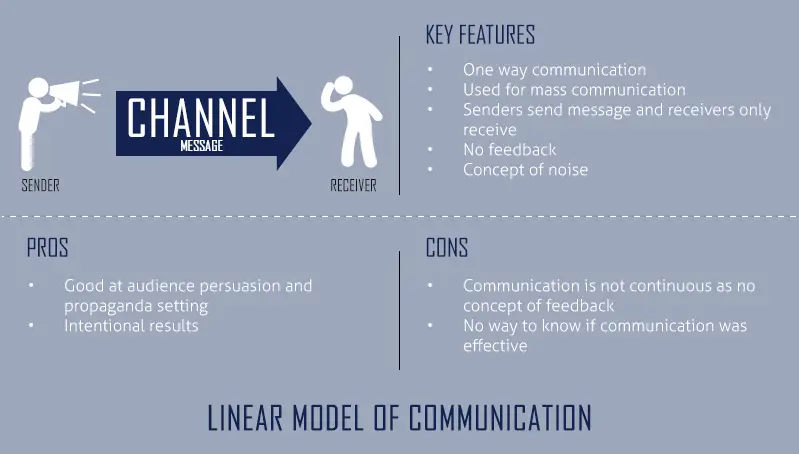
If audience members are interested, agree, and understand us, they may lean forward in their seats, nod their heads, have positive or neutral facial expressions, and provide favorable vocal cues (such as laughter, “That’s right,” “Uh huh,” or “Amen!”). Even in a public speaking situation, we watch and listen to audience members’ responses. This means that communication is not a one-way process. Over the telephone, we listen to paralinguistic cues, such as pitch, tone, volume and fillers (i.e., “um,” “uh,” “er,” “like,” and so on). The information we gain from these observations is known as feedback. When we speak, we observe others’ nonverbal behavior to see if they understand us and we gauge their emotional state. It is used instead of sender and receiver, because when we are communicating with other people we are not only sending a message, we are receiving messages from others simultaneously. The term communicator refers to all of the people in the interaction or speech setting. Ramsey’s “Using Language Well” (Chapter 10) provides additional insight into the encoding and decoding process. If your aunt were trying to find her way to your apartment, she would listen to your words, associate these words with streets and landmarks that she knows, and then she would form a mental map of the way to get to you. So, if you wanted to explain to your aunt the directions to your new apartment, you would picture in your mind the landscape, streets and buildings, and then you would select the best words that describe the route so your aunt could find you.ĭecoding is the reverse process of listening to words, thinking about them, and turning those words into mental images. If any further suggestion or topic please comment on the bottom.Encoding refers to the process of taking an idea or mental image, associating that image with words, and then speaking those words in order to convey a message. If you like this post please share with your friends on Whatsapp, Facebook, Twitter or forward. In other words, we can say that it is breakdown of cycle at any level. It may arise on sender side if they do not choose the adequate medium for delivery of message, by using default channel and it may also arise when receiver does not properly decode the message.

Brain Drain: On whole process there is a possibility of misunderstanding at any level and is called brain drain.The reaction or response of the receiver is known as feedback. For the exchange to be complete the information must go back to whom from where it started (or sender), so that he can know the reaction of the receiver. Feedback: Communication is an exchange process.Decoding helps the receiver to drive meaning from the message. Decoding: Decoding is the process of interpretation of an encoded message into the understandable meaning.It is a receives and tries to understand the message. The Communication process is incomplete without the existence of receiver of the message. Receiver: The person who receives the message is called receiver or receiver is the person to whom the particular message is sent by the transmitter.It is the link that connects the sender and the receiver. Communication Channel is the media through which the message passes. Communication channel: The sender has to select the channel for sending the information.
#Elements of communication process series#
Encoding: The communicator of the information organizes his idea into series of symbols (words, signs, etc.) which, he feels will communicate to the intended receiver or receivers.It must exist in the mind of the sender if communication is to take Place. It may involve any face idea, opinion or information. Message: It is a subject matter of any communication.Sender initiates the message and changes the behaviour of the receiver. Sender or transmitter: The person who desires to convey the message is known as sender.

The process of communication involves the following elements: – When the message is received, it is decoded, by the receiver and gives feedback to the sender as the conformation about the particular message has been carefully understand or not. The Common channel in organization includes meetings, reports, memorandums, letter, e-mail, fax and telephone calls. The Familiarity of sender and receiver and other situation of factors.Īfter the message has been encoded, it is transmitted through the appropriate channel or medium. The encoding process is influenced by content of the message. This facts, idea or message into a language which reflects the idea. The process of communication begins when one person (the sender) wants to transmit a facts, idea or opinion or other information to the receiver.


 0 kommentar(er)
0 kommentar(er)
